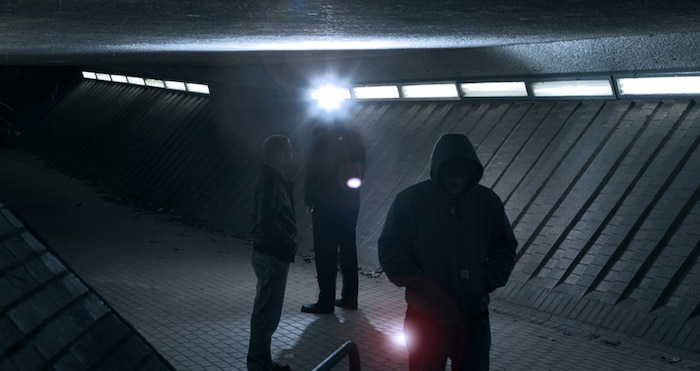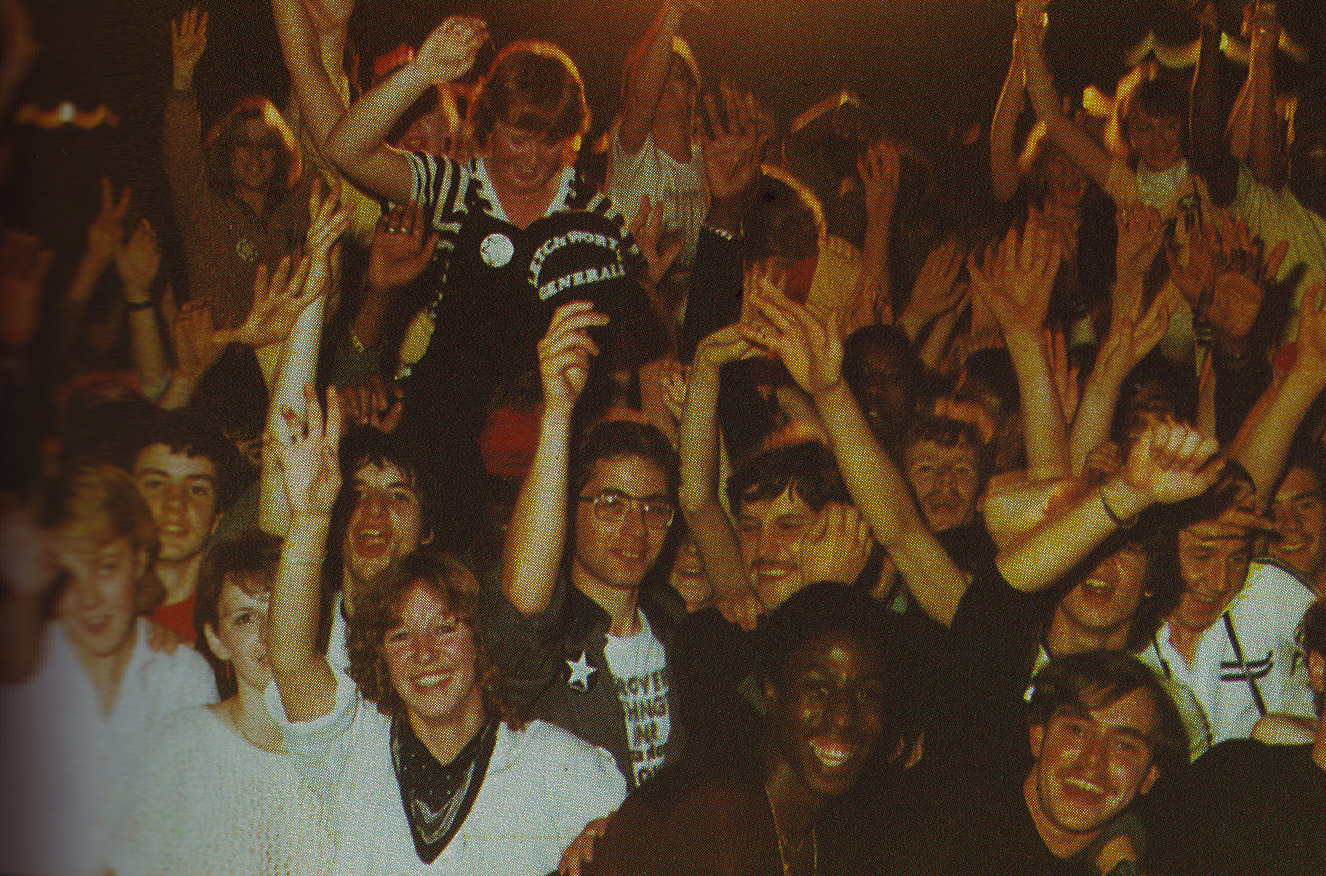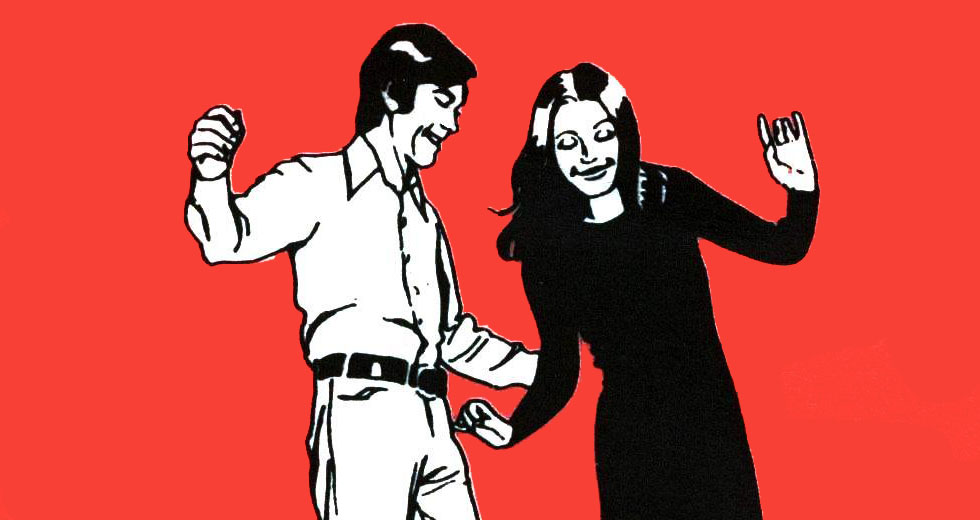The Black Dog’s Martin Dust on the Music of Sheffield
The techno producer gives a firsthand account of influential Steel City groups like Cabaret Voltaire, The Human League and Clock DVA.

The Black Dog are synonymous with the rise of British electronic music at the turn of the ’90s, pioneering a uniquely northern English twist on techno and its many variants. The membership may have been fluid, but Ken Downie has remained the one constant since the very first release in 1989. The line-up since 2001, however, has included Sheffield natives Martin Dust and Richard Dust of Dust Science Recordings.
Throughout the ’70s and ’80s, Sheffield had one of the most vibrant music scenes in the UK, due in no small part to the economic collapse of its vaunted steel and coal industry. With no jobs to be had, the youth of the city got creative. (The broad outlines were covered in the documentary Made in Sheffield.) Given Martin’s firsthand knowledge of the scene, RBMA Radio decided to sit down and talk about the city’s scene through his eyes and ears. This is an edited and condensed version of that conversation.
The Human League - Being Boiled
“Being Boiled” is one of my favorite tracks, because it was one of the first times I’d ever really heard abstract lyrics applied to a pop tune. Also, watching somebody dance to “Rock and Roll, Part II” showed the other side of Human League and where they’d eventually end up – being a pop band. Because if you’d bought the first two albums, you would probably never have guessed that that’s where they were going to go.
Phil Oakey’s hair had a massive impact.
I remember when they were number one in the UK singles charts and album chart, and they came back on the Dare tour to play the Lyceum, and for the first five or six songs – in between songs – nobody clapped. That’s what being in a band is in Sheffield. You’ve got to earn that approval. Even though you’ve gone away and been really successful, you’ve still got to work to get an audience to clap. When we were in a punk band in ’70s, we used to not leave gaps between songs so the audience didn’t get a chance not to clap.
I think pretty much like Cab Voltaire, because they were heavily influenced by Roxy Music and art and were more interested in doing happenings, they used to have a guy that did a slide show, and they used to have riot shields in front of the keyboards when they played because people would peg beer at them and spit at them, and they would do thousands of pounds worth of damage, bless ‘em. And Phil [Oakey]’s hair had a massive impact. So did him having his nipples pierced with a chain between.
It’s really difficult to imagine how much of an impact that would have now because it would have none. But in the ’70s you would get pretty badly beaten up for looking like that. You had to work pretty hard and be pretty much on your toes. I remember Phil cut the top and bottom off of a beans can and was wearing that as a bracelet, because people in Sheffield refused to pay Vivienne Westwood’s prices for clothes.
Heaven 17 - Let Me Go
Penthouse and Pavement is a fantastic conceptual album, and something I had great difficulty in liking, because at the time I was really into hardcore punk, things like Dead Kennedys and Germs. A lot of people misinterpret the artwork and the look of it. The whole concept of setting up a limited company and releasing one album and then moving onto the next thing, that really appealed. It’s kind of like an art action. I really liked the idea behind that.
“Let Me Go” is probably the first time a 303 has been used and abused in that way, and you can see that just sets the template forever. It’s got the worst sim-drum intro in the world, which will forever date it and will forever make me hate the 30 seconds, but the rest is just … it’s just one of them things that you’d wished you’d written.
They Must Be Russians - Nagasaki’s Children
“Nagasaki’s Children” is a great track, best track on the EP, recorded at Cab Voltaire’s studio. One of the main guys in it, Martin Lacey, who we still see today, used to do a fanzine called NMX, and he also used to put on bands, so along with Paul Bower from 2.3, they were quite central characters for bringing new bands to Sheffield. They were also really good tastemakers as well.
I don’t think it happens too much now, but back then you would trust journalists from Sounds, Melody Maker, NME. I remember reading the review of Suicide’s first album. It got nine [out of ten]. I skipped school, and went off and bought it, and I thought it was fantastic. Same with a lot of bands, because back then you would try to out-skill anybody by discovering things first, then that would be your band.
Clock DVA - 4 Hours
Paul Bower, who you mentioned, also ran a fanzine called Gun Rubber, right?
He ran it with Adi Newton from Clock DVA. Adi and Phil Oakey were in a band called The Future with … it was quite incestuous back then, because practice rooms would have been rented by eight or nine people, and people generally invented a band on the bus into Sheffield, and then invent two more on their way out. I mean, I remember we used to have a Wilson Peck’s catalog with all the instruments and microphones and drum kits, and we invented a band call Discontinued. I still think I’m in it, but we didn’t have any instruments. We just used to look at catalog and thought about what we were going to do.
Sheffield’s got a lot of bands and a lot of creative people that you have never heard of, but have almost made it. I think we’ve got the highest percentage of bands that get signed for one single and disappear. That’s what Sheffield’s like, I think. We get one famous thing every ten years.
What were Clock DVA like?
Clock DVA were a really strange band. “4 Hours” is a perfect slab of punk and angry discordant chords, and they were amazing live, but they used to go off on really weird tangents. You listen to any of their albums, and they go from sound collage to a pop track to another sound collage, and then you’d go and see them live, and the performance would be them just smashing fluorescent lights.
I guess this is the most famous track, and one that I remember dancing to in Limit Nightclub, but they were a really weird proposition. I never really got on with Adi or even wanted to talk to him. He’s … I don’t know, there was just an edge to him that – as soon as you get close enough – you’re going to be in trouble. And I don’t even know if that’s true, but that’s what it felt like at times. I’ve seen some crazy performances by him, and not in a good way. I guess Adi was trying to move things away from the traditional rock ‘n’ roll format, but it just, somehow, made me feel really uncomfortable and not want to be any part of it. If that’s what you were trying to achieve, then yeah, you achieved it, Adi.
You mentioned Limit Nightclub. Can you talk a bit about that?
One time Cabaret Voltaire brought Kraftwerk in, and the whole fucking place just stopped.
The Limit Nightclub was down a sticky set of stairs, a room that held 300 people with three bars and some kind wine bar at the far end, a five-inch stage and DJ name Paul Unwin. The beautiful thing about it was you could get in underage, and you could get in and not have to buy a drink. You could get in and do the first two hours just listening to Paul’s weirdo selections and then catch the bus home because back then you didn’t earn a lot of money, and Woolworth’s didn’t stock a lot of weirdo records, so you couldn’t nick them. Woolworth’s would only stock the top 50, so that’s all you could manage to steal. You’d go in on a Tuesday morning and just lift everything before all the staff got to the tills.
Limit was a great place. I’ve got no idea where our old Jarvis [Cocker] is, but he always seemed to be in there. Him and Tim [Allcard] were in a more experimental band. They used to dress in sacks and big baggy trousers with bits of rope on them and wear swimming caps and do these really weird abstract dances, but they were always accepted. You’d see Phil Oakey in there. You’d see all the punk guys. You’d see Cab Voltaire in there, which was just like, “Fucking hell.” One time Cabaret Voltaire brought Kraftwerk in, and the whole fucking place just stopped.
Cabaret Voltaire – Do the Mussolini (Headkick)
The first time I heard Cabaret Voltaire was live at university with Throbbing Gristle. What a beautiful cacophony, really. I didn’t understand what they were doing onstage. I didn’t understand the mix of drum machine, guitar. Why does the singer sound like a Dalek? Why is Richard playing a clarinet? Why is everybody loving this? Why did it end in a fight?
It took me ages to clock on, but Richard was playing reggae guitar.
The next day I went to Revolution Records and got the extended play EP, which I still got and still play. It’s probably my favorite EP by them. It’s just an amazing, amazing record. The whole thing about them that you never pick up on right way is that it’s this really weird electronic art band, but you can hear – if you sit and listen to the record –the influence of James Brown and black music and reggae.
It took me ages to clock on, and it sounds ridiculous, but Richard was playing reggae guitar, but in a way that he devised, and they were using drum machines from keyboard organs and things like. It just sounded like the future to me. I remember going to see UK Subs and Joy Division and coming out of the club, and they were there across the road at a bus stop, bottom of West Street. I think when you’re young and impressionable... Well, I don’t know what you imagine people in bands do, but it certainly wasn’t catch buses.
Vice Versa - Stilyagi / ABC - Look of Love
I remember seeing Vice Versa live on stage with Martin Fry in a big jumper just playing a single oscillator like Stockhausen would do. It wound so many people up, because punk was these guitars and these drums, and it still carried on the rock-and-roll idea. But here were these guys looking as if they were completely chancing it on a single oscillator. There’s still footage. I think it’s the only existing footage of them live, because as they were putting the 8mm film through the machine, it actually shredded it while they were recording it.
I guess they pretty much learned their lesson from Human League when it looked like the art stuff wasn’t going to go anywhere or wasn’t going to get any bigger. I know at some point, they started devising ABC, what ABC was going to be, why it was going to be different, pretty much like we’d be devising what band we’d be in on a bus. That innocent naiveté.
How much do you think Trevor Horn had to do with ABC’s look?
Northern soul and Motown was a massive influence in Sheffield.
I don’t think Trevor Horn had anything to do with their look because I … Strangely enough, I used to practice in a punk band and Mark, the bass player, used to come and visit before they were famous. We used to play punk records where we couldn’t work out what the bass player was doing, and he would show us what it was. He had those ears where he could listen to something and just play it straight away.
I think they also had a lot of the ideas because Northern soul and Motown was a massive influence in Sheffield. The two cities were very similar. Detroit with cars, Sheffield with steel and coal, all our eggs in one basket, and when that started to disappear, a lot of working class people were in the same situations. So the soaring strings and everything else made perfect sense to me, because it was kind of like, “Yeah, we’re in the fucking gutter, but we’re going to reach for something, and we’re going to escape something for a few hours.”
Hula - Poison (Club Mix)
Hula was one of the most powerful bands live I’ve ever seen. The percussion, the shouting, just everything. It was like a wall of sound. They were friends with Stephen Mallinder from Cabs. Cabaret Voltaire played a massive part in Sheffield with Western Works, helping other bands get started because studios weren’t accessible. Nobody had $150 quid a day to record stuff and – if they had – they would probably be buying instruments instead or spending it down at the pub.
Chakk - Out of the Flesh
Chakk, like Hula, should have been a massive export from Sheffield. Sim, who’s the saxophone player in Chakk, is a good friend of ours. They got signed with a massive unheard of deal for a Sheffield band back then. I think they got something like a quarter of a million pounds when they signed, and they went off and set up Fon Studios and immediately didn’t finish an album and disintegrated. Chakk would have been absolutely massive if they’d released an album, but I’m really glad that they invested in Fon, because we got so much good music out of there.
Forgemasters - Track with No Name
One of the obvious Fon Studio records is the Forgemasters’ “Track With No Name.”
Forgemasters was obviously the start of Warp Records and a great track. I remember it going down really well at Jive Turkey and everywhere it got played. It was great to see Warp being successful from the start really, because there is a strange Sheffield pride. Although we won’t clap [for] bands that are really successful, we’re really glad when somebody is. It’s a strange situation.
What was Jive Turkey like?
Jive Turkey was probably one of the first dance clubs that I’d ever been to that brought together under one roof a multiracial audience in Sheffield. Unless you were going to specialist nights, you would rarely see a mixed crowd in the ’70s and ’80s. It’s a really strange phenomena that I’m really glad doesn’t exist anymore.
In addition to the early club music they’d play, there were also a lot of jazz dancers, right?
Jive Turkey was the first time that I’d witnessed a group of people into music where there wasn’t a uniform.
Yeah. Obviously I used to go to bar when all that jazz stuff came on. I still don’t like it to this day. But it was the first time lots of people from different tribes had come together and weren’t kicking the hell out of each other because there was no identifiable uniform. They weren’t punks, weren’t skins, weren’t teds. It was all about the music. With Northern soul, there was a uniform. There was a hierarchy. The dancers were close to the DJ. You couldn’t go in anybody’s square. There was a whole uniform to this. Jive Turkey was the first time that I’d witnessed a group of people into music where there wasn’t a uniform.
They were massively successful. Parrot got a lot of respect from the black crowd for the music that he played. He knew his stuff, and he obviously went on to do quite a few successful bands and records. He probably doesn’t get the credit that he deserves.

